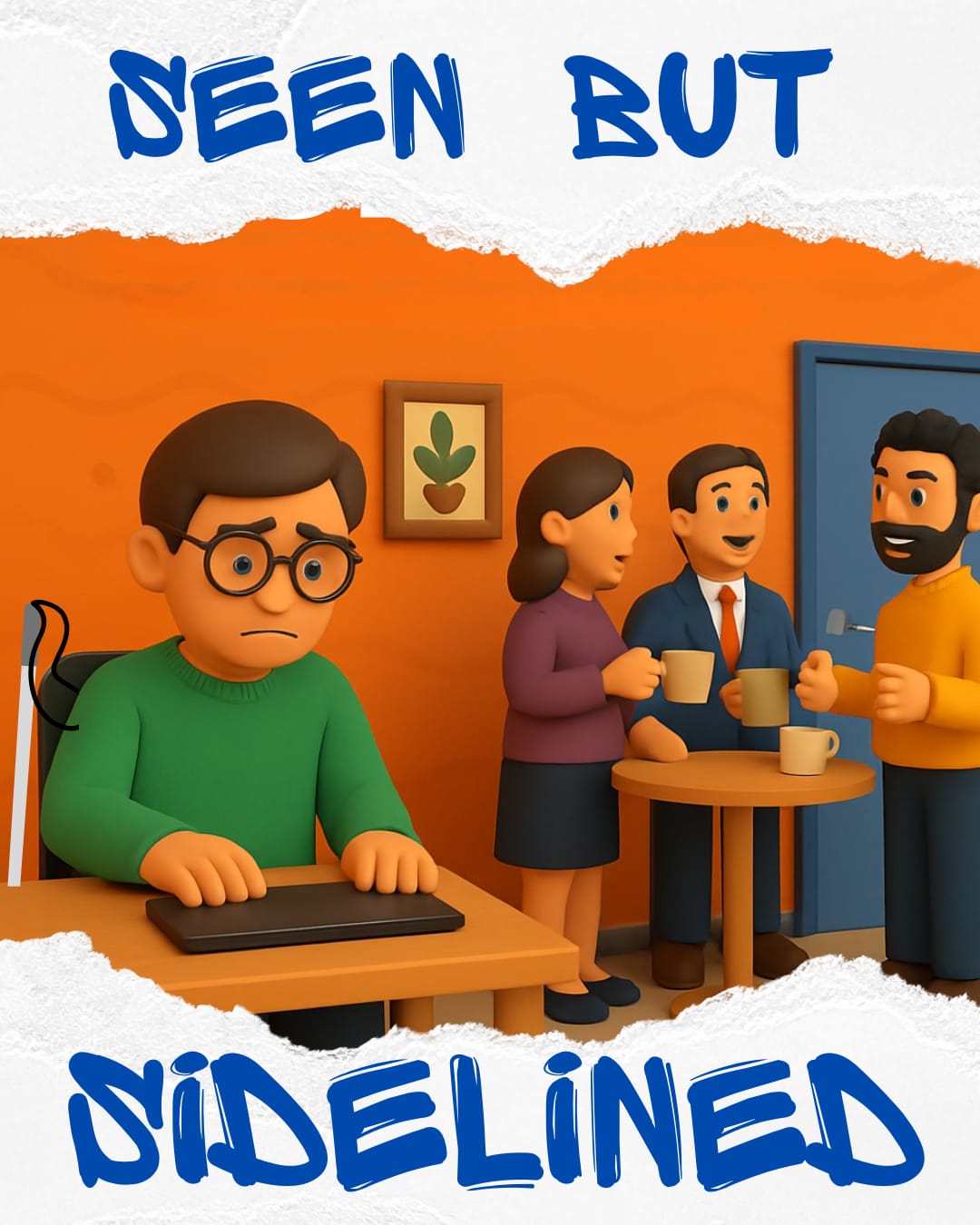
On a quiet afternoon, under the shade of a large tree in the school playground, 11-year-old Vishal sat on a raised cement platform, his usual spot during the P.T. period. From there, he could hear the sound of sneakers on the ground, the laughter of his classmates, and the sharp calls of the P.T. teacher. The scene before him was a mix of sounds and faint outlines. Students running, shouting, moving in different directions. He could see them, but not clearly enough to know who was who. Being partially visually impaired, this was how the world often appeared to him, near enough to sense, yet not fully clear.
It was for this reason that Vishal was always made to sit aside during P.T. period, “to keep him safe”.
As he sat there, he didn’t long to run after the football or join his friends on the field. Sitting on the sidelines had become a normal part of his life. Whether it was at school, family functions, or community events, he was used to being kept aside, not only because people feared he might “get hurt”, but also because they feared he might cause something to go wrong. What if he accidentally knocked over a glass of water? What if he stepped over the rangoli someone had drawn? What if he stumbled into something? It was easier, people thought, to ask him to stay away than to deal with these small possibilities.
Also Read: Difference is Natural, Exclusion is Not
“Everybody was effectively telling me, ‘Don’t be visible unless people wish’, and I complied”, says Vishal, now in his mid-twenties.
Over time, that message became a habit. Today, no one needs to tell him to sit aside. In any gathering, he quietly chooses a corner seat, careful not to draw attention to himself, careful not to become an “obstacle”. What started as protection eventually turned into self-restraint.
But life has a way of presenting ironies. Vishal now works in a corporate office that prides itself on being “inclusive”. It was through one such diversity initiative that he was hired. And yet, this new environment brings its own challenges.
Here, he is told to be “vocal, visible, and audible.” “More than performance, how ‘proactive’ you are matters here”, a colleague once told him. “I’m just not that person”, he says quietly. “I don’t know how to become one.” Sometimes, he even thinks about resigning.
Throughout his life, people had asked Vishal to stay quiet, to stay aside, all in the name of protecting him from his disability. Now, the same society asks him to speak up, to assert himself, again, because of his disability. The world that once excluded him now expects him to carry the burden of his own inclusion.
Sometimes, Vishal wonders what has really changed. The walls are no longer visible, but they still exist, only in different forms. Earlier, people feared he might get hurt. Now, they fear he might not “fit in”. Both times, the message remains the same: it is he who must adjust, not the world around him.
And that’s the heart of it. Disability was never the problem. The real problem lies in how we, as a society, choose to see it. What we call “exclusion” isn’t just about keeping someone out of the room, it’s also about not accepting their way of being once they’re in it. True inclusion isn’t about asking people like Vishal to become more visible or more vocal. It’s about creating spaces where they no longer feel the need to hide.
Note: The person who shared this lived experience of his had requested us not to reveal his identity in any way. Hence, we’ve called him Vishal for the purpose of this blog post and have not revealed any specific details about him.
